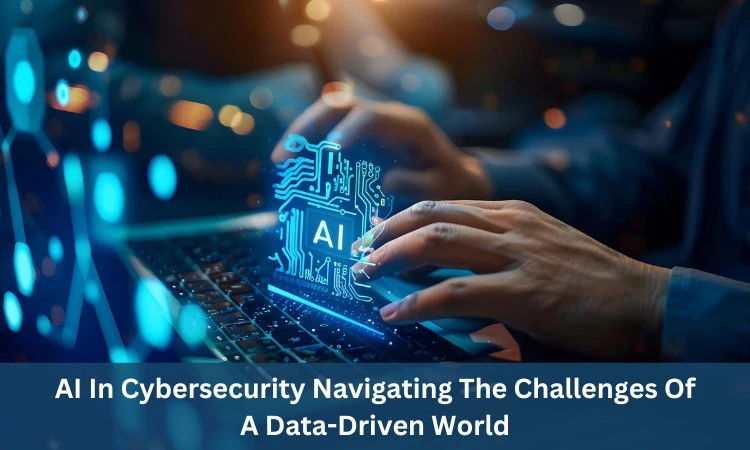The Role Of AI In Cybersecurity
AI, with its ability to process and analyze vast amounts of data at lightning speed, is becoming an indispensable part of modern cybersecurity strategies. Here’s how AI is making a difference:
- Threat Detection and Response: Traditional cybersecurity systems rely heavily on pre-defined rules and signatures to detect threats. However, this approach is often reactive and limited in scope. AI, particularly machine learning (ML), can analyze patterns in data and identify anomalies that may indicate a cyber threat. AI-driven systems can detect new and unknown threats in real-time, enabling faster and more accurate responses to cyber incidents.
- Automating Routine Security Tasks: AI can automate a wide range of routine cybersecurity tasks, such as monitoring network traffic, scanning for vulnerabilities, and patch management. This not only improves efficiency but also frees up human analysts to focus on more complex and strategic tasks. AI-powered automation can significantly reduce the time it takes to detect and mitigate security threats.
- Predictive Analytics: AI’s predictive capabilities allow organizations to anticipate potential cyber threats before they occur. By analyzing historical data and identifying trends, AI can predict where and how future attacks might happen. This proactive approach helps organizations strengthen their defenses and prevent breaches before they can cause harm.
- Enhanced User Authentication: AI is revolutionizing user authentication processes by implementing more sophisticated methods, such as biometric authentication and behavioral analysis. AI systems can continuously learn from user behavior and detect deviations that may indicate unauthorized access. This makes it harder for cybercriminals to bypass authentication mechanisms.
- Adaptive Security: AI enables cybersecurity systems to adapt to changing threats in real-time. As cyber threats evolve, AI systems can update their models and strategies to counter new attack vectors. This adaptability ensures that security measures remain effective even as the threat landscape changes.
Challenges Of AI In Cybersecurity
While AI offers significant advantages in the fight against cybercrime, its integration into cybersecurity is not without challenges. These challenges must be addressed to fully harness the potential of AI in safeguarding digital assets.
- Data Privacy Concerns: AI systems require large amounts of data to function effectively. In cybersecurity, this often involves collecting and analyzing sensitive information, which can raise privacy concerns. Ensuring that AI systems comply with data protection regulations and maintain the privacy of individuals is a significant challenge. Organizations must implement robust data governance frameworks to manage the ethical and legal implications of AI-driven cybersecurity.
- Bias and False Positives: AI systems are only as good as the data they are trained on. If the training data is biased or incomplete, the AI system may produce inaccurate results, leading to false positives or false negatives. In cybersecurity, false positives can result in unnecessary alerts and wasted resources, while false negatives can leave organizations vulnerable to attacks. Addressing bias in AI models and ensuring the quality of training data is crucial to minimizing these risks.
- Adversarial Attacks: Cybercriminals are increasingly targeting AI systems themselves. Adversarial attacks involve manipulating AI models by feeding them malicious input data, causing them to make incorrect decisions. For example, attackers could trick an AI system into misclassifying malware as benign software. Developing AI models that are resilient to such attacks is an ongoing challenge for cybersecurity professionals.
- Complexity and Skill Gaps: Implementing and managing AI-driven cybersecurity systems requires specialized knowledge and skills. Many organizations face a shortage of qualified professionals who can effectively deploy and maintain these advanced systems. This skill gap can hinder the adoption of AI in cybersecurity, especially for smaller organizations with limited resources. Investing in education and training programs is essential to bridge this gap and fully leverage AI’s capabilities.
- Ethical and Legal Challenges: The use of AI in cybersecurity raises ethical and legal questions, particularly around the balance between security and individual rights. For instance, AI-driven surveillance systems can enhance security but may also infringe on privacy rights. Additionally, the use of AI in autonomous decision-making processes, such as automated threat response, can lead to ethical dilemmas if these systems make mistakes. Establishing clear ethical guidelines and legal frameworks is necessary to navigate these challenges.
The Future Of AI In Cybersecurity
Despite the challenges, the future of AI in cybersecurity is promising. As AI technology continues to advance, it will become even more integral to defending against cyber threats. However, to maximize the benefits of AI while mitigating its risks, organizations must adopt a balanced approach that includes:
- Continuous Learning and Adaptation: AI systems must be continuously updated and trained to keep pace with evolving threats. This requires ongoing investment in research and development to ensure that AI models remain effective over time.
- Collaboration across Sectors: The fight against cybercrime is a shared responsibility. Collaboration between governments, private sector organizations, and academia is crucial to developing robust AI-driven cybersecurity solutions. Sharing threat intelligence and best practices can help build stronger defenses against cyber threats.
- Ethical AI Practices: Organizations must prioritize ethical considerations in the deployment of AI in cybersecurity. This includes ensuring transparency, accountability, and fairness in AI-driven decision-making processes. By adhering to ethical standards, organizations can build trust with stakeholders and minimize potential negative impacts.

